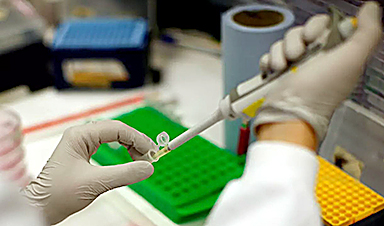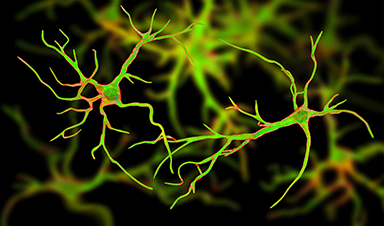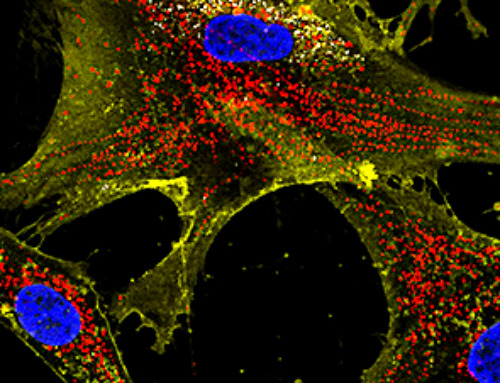- CAR-T therapy can cure terminally ill cancer patients but it is prohibitively expensive, costing hundreds of thousands of dollars.
- Leveraging recent advances in chip technology scientists can create and mass produce small machines to re-engineer the immune system.
- But the scientific community needs public-private partnerships to ensure this medical breakthrough becomes accessible to everyone.
After suffering 16 months of chemotherapy for her leukaemia, treatment options for six-year-old Emily Whitehead had run out. Her parents began to fear the worst. As a last-ditch effort, the University of Pennsylvania enrolled Emily in a clinical trial that involved reprogramming her immune cells to destroy her cancer. The results were phenomenal. Emily not only survived, but nine years later she is a healthy teenager with no cancer.
Behind Emily’s recovery is CAR-T (Chimeric Antigen Receptor T cells ) a cell-based therapy that has become a revolutionary weapon in the treatment of previously incurable blood cancers.
CAR-T cell therapy genetically modifies a patient’s immune cells to hunt and kill cancer cells. It is a form of personalized immunotherapy that can provide lasting remissions, even to terminally ill patients who have just months to live and for whom classic treatment options have not worked.
More than 400 clinical trials of CAR-T therapies are currently in progress. Their impact could be enormous. According to the World Health Organization, cancer causes one in six deaths worldwide. Personalized cell therapy has the potential to save millions of lives. Preliminary data even suggests that engineering immune cells may one day be used to treat heart failure, autoimmune diseases, diabetes and HIV.
Why does CAR-T cost so much?
But unit economics are hobbling the rollout of CAR-T to the full number of patients whose lives it could save. The treatment alone can cost up to $475,000 and US hospitals can charge as much as $1.5 million to administer it, once ancillary costs are taken into account.
So why this high price? With conventional therapies, drug makers get economies of scale: the more they produce, the cheaper each dose becomes.
But CAR-T is tailor-made for each patient, and behind every treatment lies a highly sophisticated process, which is time-consuming and brutally expensive.
The patient’s immune cells are collected, purified in various steps, genetically modified, formulated at the right dose and reinfused. This complex manufacturing process requires shipments to different labs and frequent manual interventions, which introduce the risk of human error and potentially life-threatening side effects. Compounded by the fact that CAR-T consists of living cells that vary in potency, manufacturers need to continuously test results throughout the process.
The result is a production time that can take weeks, and an unaffordable price. Unless these economics change, this treatment will not reach patients whose lives it could save – it will only reach those privileged enough to afford it.
Technology holds the key to reducing costs
There is, however, hope. The most recent insights in nanotechnology, artificial intelligence (AI), biosensors, and the Internet of Things could help overcome the current roadblocks in making personalized cell therapies affordable.
The solution to democratize these therapies lies in automating their manufacturing process, which would reduce the cost, time, and risks significantly. This will require several engineering breakthroughs but is technically possible.
Recent advances in chip technology provide inspiration. The modern world’s insatiable demand for better computers, gaming consoles, and smartphones has resulted in the extreme miniaturization of transistors – the components which drive technology’s processing capacity – as more transistors on smaller circuits enables new and stronger technological abilities…..
News
Novel mRNA therapy curbs antibiotic-resistant infections in preclinical lung models
Researchers at the Icahn School of Medicine at Mount Sinai and collaborators have reported early success with a novel mRNA-based therapy designed to combat antibiotic-resistant bacteria. The findings, published in Nature Biotechnology, show that in [...]
New skin-permeable polymer delivers insulin without needles
A breakthrough zwitterionic polymer slips through the skin’s toughest barriers, carrying insulin deep into tissue and normalizing blood sugar, offering patients a painless alternative to daily injections. A recent study published in the journal Nature examines [...]
Multifunctional Nanogels: A Breakthrough in Antibacterial Strategies
Antibiotic resistance is a growing concern - from human health to crop survival. A new study successfully uses nanogels to target and almost entirely inhibit the bacteria P. Aeruginosa. Recently published in Angewandte Chemie, the study [...]
Nanoflowers rejuvenate old and damaged human cells by replacing their mitochondria
Biomedical researchers at Texas A&M University may have discovered a way to stop or even reverse the decline of cellular energy production—a finding that could have revolutionary effects across medicine. Dr. Akhilesh K. Gaharwar [...]
The Stunning New Push to Protect the Invisible 99% of Life
Scientists worldwide have joined forces to build the first-ever roadmap for conserving Earth’s vast invisible majority—microbes. Their new IUCN Specialist Group reframes conservation by elevating microbial life to the same urgency as plants and [...]
Scientists Find a Way to Help the Brain Clear Alzheimer’s Plaques Naturally
Scientists have discovered that the brain may have a built-in way to fight Alzheimer’s. By activating a protein called Sox9, researchers were able to switch on star-shaped brain cells known as astrocytes and turn them into [...]
Vision can be rebooted in adults with amblyopia, study suggests
Temporarily anesthetizing the retina briefly reverts the activity of the visual system to that observed in early development and enables growth of responses to the amblyopic eye, new research shows. In the common vision [...]
Ultrasound-activated Nanoparticles Kill Liver Cancer and Activate Immune System
A new ultrasound-guided nanotherapy wipes out liver tumors while training the immune system to keep them from coming back. The study, published in Nano Today, introduces a biodegradable nanoparticle system that combines sonodynamic therapy and cell [...]
Magnetic nanoparticles that successfully navigate complex blood vessels may be ready for clinical trials
Every year, 12 million people worldwide suffer a stroke; many die or are permanently impaired. Currently, drugs are administered to dissolve the thrombus that blocks the blood vessel. These drugs spread throughout the entire [...]
Reviving Exhausted T Cells Sparks Powerful Cancer Tumor Elimination
Scientists have discovered how tumors secretly drain the energy from T cells—the immune system’s main cancer fighters—and how blocking that process can bring them back to life. The team found that cancer cells use [...]
Very low LDL-cholesterol correlates to fewer heart problems after stroke
Brigham and Women's Hospital's TIMI Study Group reports that in patients with prior ischemic stroke, very low achieved LDL-cholesterol correlated with fewer major adverse cardiovascular events and fewer recurrent strokes, without an apparent increase [...]
“Great Unified Microscope” Reveals Hidden Micro and Nano Worlds Inside Living Cells
University of Tokyo researchers have created a powerful new microscope that captures both forward- and back-scattered light at once, letting scientists see everything from large cell structures to tiny nanoscale particles in a single shot. Researchers [...]
Breakthrough Alzheimer’s Drug Has a Hidden Problem
Researchers in Japan found that although the Alzheimer’s drug lecanemab successfully removes amyloid plaques from the brain, it does not restore the brain’s waste-clearing system within the first few months of treatment. The study suggests that [...]
Concerning New Research Reveals Colon Cancer Is Skyrocketing in Adults Under 50
Colorectal cancer is striking younger adults at alarming rates, driven by lifestyle and genetic factors. Colorectal cancer (CRC) develops when abnormal cells grow uncontrollably in the colon or rectum, forming tumors that can eventually [...]
Scientists Discover a Natural, Non-Addictive Way To Block Pain That Could Replace Opioids
Scientists have discovered that the body can naturally dull pain through its own localized “benzodiazepine-like” peptides. A groundbreaking study led by a University of Leeds scientist has unveiled new insights into how the body manages pain, [...]
GLP-1 Drugs Like Ozempic Work, but New Research Reveals a Major Catch
Three new Cochrane reviews find evidence that GLP-1 drugs lead to clinically meaningful weight loss, though industry-funded studies raise concerns. Three new reviews from Cochrane have found that GLP-1 medications can lead to significant [...]





















